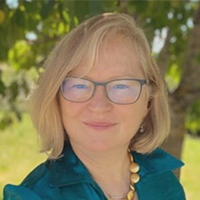Reflections on the global mpox outbreak
Vaccine Insights 2023; 2(5), 175–178
DOI: 10.18609/vac.2023.028
Charlotte Barker, Editor, Vaccine Insights spoke to Rosamund Lewis, Technical Lead for mpox, WHO, on March 15, 2023, about the lessons learned from the global response to mpox. This article has been written based on that interview.
In May 2022, there was a sudden and unexpected outbreak of mpox worldwide, with cases appearing in many countries that had not seen mpox before. Mpox is caused by monkeypox virus, part of the orthopoxvirus genus that also includes the causative agent of smallpox, variola virus. On July 23, 2022, WHO Director-General Tedros Adhanom Ghebreyesus declared the mpox outbreak to be a Public Health Emergency of International Concern [1].
After a year of a global response to this new health emergency, many actions were taken by health authorities and affected communities around the world, and the outbreak is being tamed. On May 11, 2023, just 2 days short of a year after the first case in the global outbreak was reported, WHO lifted the emergency declaration. However, more than 20 countries across the world are still reporting cases and work continues to monitor the situation, respond to outbreaks, and improve access to diagnostic tests, vaccines, and treatment [2].
Epidemiology
The core of any outbreak response is epidemiology—knowing who is being affected and where. One of the primary reasons we were well prepared was that we were able to build on years of work on this previously little-known disease. When cases of mpox started being reported in previously unaffected countries, WHO was able to very quickly assemble an emergency response team, including an epidemiology team, which was immediately able to elicit support and receive data from regions and countries, as is the mandate of WHO.
From the start of the outbreak, we were able to provide diagnostic support very quickly with polymerase chain reaction (PCR) test kits, protocols, and sharing of information. WHO created a data platform to integrate all the information being received from countries on cases, including age, sex, sexual orientation, possible modes of exposure, symptoms, and other features of cases being reported. Due to the ongoing COVID-19 pandemic, countries and commercial testing companies had developed PCR and genomic sequencing capacities they didn’t have before, so the technical and human resources were already in place.
These epidemiological data allowed us to rapidly ascertain that in countries reporting new cases, the disease was affecting mainly men who have sex with men with multiple casual partners and was not moving into the wider population over time. This in turn allowed health agencies at all levels to work directly with the most affected communities to quell the outbreak and to coordinate the offer of health services such as diagnostics and vaccines for those most at risk.
Communication
Another critical element that WHO was able to put into motion quickly and effectively was communication. This included information for the general public as well as risk communication through community engagement with the most affected communities [3]World Health Organisation. Public Health.. The WHO Health Emergencies Programme risk communication experts worked hand-in-hand from the beginning with the WHO human immunodeficiency virus (HIV), hepatitis, and sexually transmitted diseases (STI) Department. Our colleagues in this team run existing programs related to HIV and STIs, so were well placed to reach affected communities and work with them to develop messaging that was acceptable to them. The result is a vast array of products, infographics, Q&As, and audiovisual material describing how people who are at risk can protect themselves. Materials were made widely available in several languages through WHO regional and country offices, as well as directly through community organizations that could adapt them to their needs. We also had existing training materials regarding mpox in endemic regions that we could adapt quickly to create guidance early in the outbreak.
Vaccines & antiviral drugs
WHO has an institutional memory of smallpox eradication, and an ongoing program of smallpox preparedness, so we were able to provide guidance on vaccines and immunization.
Second- or third-generation vaccinia vaccines have an excellent safety profile, and it was thought they would be effective against other infections caused by orthopoxviruses. However, there had been no studies specifically demonstrating the effectiveness of these vaccines for use during an outbreak of mpox. Without that data, the vaccines were not authorized for emergency use for mpox outbreaks and were not prequalified. Therefore, WHO was able to issue guidance based on available information, but not directly procure vaccines, leaving the responsibility for procurement with national public health authorities. Some countries in Latin America have chosen not to vaccinate at all, while some regions, such as Montreal, Canada, ramped up quickly from a model of post-exposure vaccination for contacts to a primary prevention model of vaccination for those at risk.
The final piece is antiviral agents, such as tecovirimat, which are also a product of the smallpox preparedness research program and have been demonstrated to be effective in vitro and in vivo, including against mpox in non-human primates and prairie dogs, which is the model used to study monkeypox virus pathogenicity and treatment. Again, these drugs did not have emergency-use authorization or prequalification, and they lack the 200-year history of smallpox vaccines. Therefore, WHO guidance on antiviral agents stressed the need for more evidence, and a research meeting was convened to discuss further research and develop a protocol to serve as a template for entities that want to do their own trials. There are now several trials underway for use of antiviral therapeutics for mpox and WHO did make some treatment courses available for compassionate use.
Looking ahead
We have learned some important lessons from COVID-19 and mpox. However, we need to move away from the rinse-and-repeat cycle of funding for pandemic and epidemic preparedness. Often, randomized controlled trials for essential countermeasures are only put in place after a major outbreak, leading to situations like that for mpox, where a lack of data means WHO is unable to assess and prequalify available vaccines and therapeutics. Ideally, clinical trial protocols should be in place before an outbreak, ready to be deployed as soon as they are needed.
Sustaining funding and human resources beyond the initial crisis is a challenge. In the case of mpox, while there was huge global interest, funding did not easily follow. A combination of human nature, media scrutiny, and limited resources mean that attention (and funding) quickly drop off once an outbreak is no longer seen as a major threat. However, we need sustained investment across a broad strategic research agenda if we are to apply lessons learned and build on new knowledge to handle future outbreaks more effectively.
In mpox, there is still a lot we need to do to maintain and strengthen surveillance and prevention and control programs. In terms of geography and case numbers, the disease has not yet returned to where it was before this outbreak and travel-related cases and community transmission continue to occur. Even after the rapid decline in cases in 2023, we are now seeing new outbreaks in many locations across the world, including in Japan, Taiwan, China, Central and South America, and the USA, with some outbreaks leading to sustained community transmission.
The goal now is to eliminate human-to-human transmission through sustained effort. This will involve the integration of mpox detection, prevention, and care with other programs such as those for HIV and STIs. We also want to strengthen the integration of mpox prevention with other programs, which allows us to reach vulnerable and marginalized populations. For example, in the US, reaching more marginalized groups who face greater stigma, such as Black and brown men, with tests and vaccines was less effective early in the response, so new efforts are being made to reach these groups.
While mpox is now undoubtedly an infectious disease that spreads between people, this outbreak again highlights the importance of One Health and of better understanding zoonotic diseases before they begin to spread efficiently in humans. We need to learn more about what happens at the animal−human interface. WHO’s Strategic Advisory Group on the Origin of Novel Pathogens (SAGO) recently laid out the research agenda for the investigation of the origins of outbreaks, using mpox as an example [4]WHO Scientific Advisory Group for the Origins of Novel Pathogens (SAGO). Recommendations to better understand the origins of and factors for the emergence and re-emergence of mpox. (December 22 2022)(Accessed May 2023)..
Finally, we need to pull together findings from across the broader research agenda to develop a comprehensive strategy and countermeasures for future outbreaks—not just for mpox, but all pathogens with pandemic potential. We need rapid and accurate epidemiological data to inform communication, public health measures, and medical countermeasures. In all measures, emphasizing a destigmatizing and ethical approach is critically important. Despite the lifting of the emergency phase for this outbreak, it is critical to continue to build on all we have learned and sustain investment in continuing research for vaccines, diagnostics and therapeutics against orthopoxviruses, which still have surprises in store for us.
Biography
Dr Rosamund Lewis is a leading public health physician and medical epidemiologist. She is the World Health Organization Technical Lead for the global mpox response and heads the Smallpox Secretariat of the WHO Health Emergencies Programme in Geneva. She has expertise in emergency preparedness, health security, immunization, disease surveillance and outbreak response, and risk communication. Dr Lewis has worked at global, national, and municipal levels, supporting a wide range of disease control programmes, including for the global covid-19 response. Dr Lewis holds degrees in Science, Medicine, and Epidemiology & biostatistics, Fellowships in Family Medicine and in Public Health and Preventive Medicine, and a Master of management in Health Leadership. She has published widely and holds an adjunct professorship at the University of Ottawa.
Affiliation
Rosamund Lewis, MD
Technical lead for mpox,
Health Emergencies Programme,
World Health Organization
References
1. World Health Organization. WHO Director-General’s statement at the press conference following IHR Emergency Committee regarding the multi-country outbreak of monkeypox - 23 July 2022. Crossref
2. World Health Organization. 2022-23 Mpox (Monkeypox) Outbreak:Global Trends. (Jun 6 2023). Crossref
3. World Health Organisation. Public Health. Crossref
4. WHO Scientific Advisory Group for the Origins of Novel Pathogens (SAGO). Recommendations to better understand the origins of and factors for the emergence and re-emergence of mpox. (December 22 2022). (Accessed May 2023). Crossref
Authorship & conflict of interest
Contributions: The named author takes responsibility for the integrity of the work as a whole, and has given her approval for this version to be published.
Acknowledgements: None.
Disclosure and potential conflicts of interest: The author has no conflicts of interest.
Funding declaration: The author received no financial support for the research, authorship and/or publication of this article.
Article & copyright information
Copyright: Published by Vaccine Insights under Creative Commons License Deed CC BY NC ND 4.0 which allows anyone to copy, distribute, and transmit the article provided it is properly attributed in the manner specified below. No commercial use without permission.
Attribution: Copyright © 2023 World Health Organization. Published by Vaccine Insights under Creative Commons License Deed CC BY NC ND 4.0.
Article source: This article is written based on an interview with Rosamund Lewis held on March 15 2023.
Interview conducted: Mar 15 2023; Revised manuscript received: May 25 2023; Publication date: Jun 14 2023.

